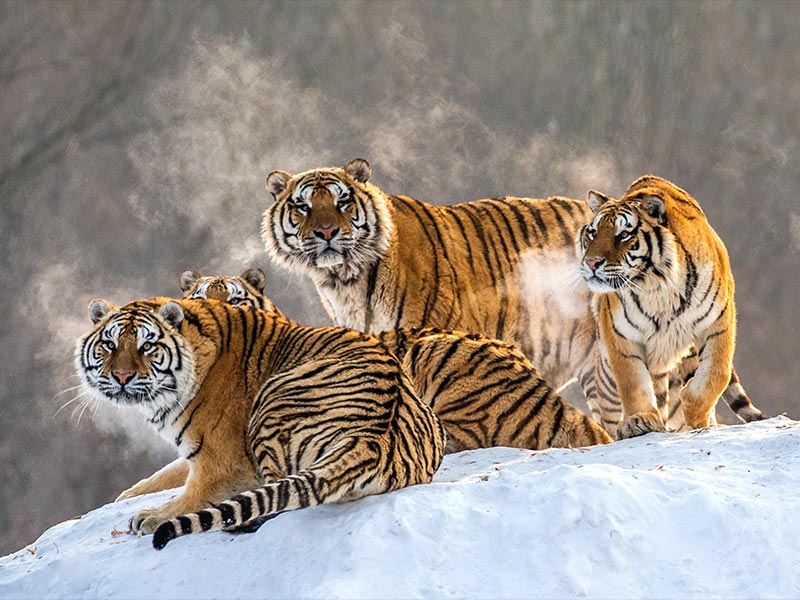Though it might seem strange that tigers—one of the most iconic predators—have bright orange fur, this color actually serves as effective camouflage in their natural habitats. The secret lies in the vision of their prey.
Many animals that tigers hunt, like deer, have dichromatic vision, meaning they perceive the world primarily in shades of blue and green. To them, the orange fur of a tiger doesn’t appear as bright and bold as it does to us humans. Instead, it looks more like muted green or gray, helping tigers blend in with the forests and grasslands where they live. This clever adaptation allows tigers to stalk their prey unnoticed until the last moment.
In addition to color, tigers’ black vertical stripes play a crucial role in their camouflage. The stripes help break up the tiger’s outline, making it harder for prey to detect their approach, especially in areas with tall grasses or dappled sunlight filtering through the trees.
The stripe pattern on a tiger is unique to each individual, much like fingerprints in humans. These stripes not only help with camouflage but also serve as an identifier among tigers themselves. Interestingly, the stripes aren’t just on the fur—they extend down to the skin, so even if a tiger were shaved, its stripes would still be visible!
This combination of seemingly bright orange fur and black stripes works together to help tigers stay hidden and stealthy, despite their size and powerful presence. So, while tigers might stand out to humans, in the eyes of their prey, they are masters of disguise, perfectly suited to their environments! Their impressive camouflage is just one more reason tigers remain such successful predators in the wild.
Related Articles
The History of Morse Code—A Language of Dots and Dashes
Before telephones and the internet, long-distance communication relied on Morse code, a system of dots and dashes representing letters and numbers. Developed in 1837 by Samuel Morse and Alfred Vail,...
The Science of Echoes—How Sound Bounces Back
Have you ever shouted into a canyon and heard your own voice return? That’s an echo, caused by sound waves bouncing off a surface and returning to the listener. Sound travels in waves, and when...
The Science of Boomerangs—Why They Come Back
Boomerangs are one of the most fascinating throwing tools, famous for their ability to return to the thrower when thrown correctly. But how does this seemingly simple object defy expectations and...





